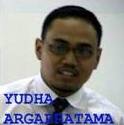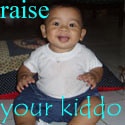By General Eric K. Shinseki
Leaders of the future — 2015? 2025? 2030? Do you know who will lead your business 10 years from now, or 20 or 25 years in the future? How about next week?
The U.S. Army knows who its leaders will be decades from today, they just don’t know their names yet. Because the Army promotes entirely from within, it knows that it must be a premier learning organization where leadership development is a daily commitment made by leaders at every echelon throughout a high performing institution.
The Certainty of Uncertainty
The quotation, “In the Kingdom of the blind, the oneeyed man is king,” and the reference to One-Eyed Kings encouraged young officers — who must grow into strategic leaders — to embrace uncertainty and to learn to be decisive.
Accept uncertainty as a given, balance risk and opportunity, find ways to generate momentum, master the transitions which always threaten to steal momentum, and retain the freedom to act whenever opportunities present
themselves. These are the hallmarks of dominant decisive operations, and they are the same attributes critical to leaders of the future, whether in the military, in business or in the social sector.
The Certainty of Change
One consistent lesson that comes out of 20th century history is that the assumptions of one decade rarely carried over into the next. If you are big and the best of what you do, change — especially fundamental and comprehensive change — is nearly beyond reach.
It will not be any different in the 21st century, even with all of its promising technologies, because change is about people. Institutions don’t change, people do. Change is a fact of life. You can either lead change or have it thrust upon you. That is the history of the 20th century.
Visioning is the most demanding task for any institution’s senior leadership. Looking into the future is an uncertain task at best, and it requires experienced, creative and determined risk takers to deliver visions of
merit.
Being more agile than one’s competition is powerful in business. In the military profession, there is no alternative to being more agile, more visionary, and bolder than your competition. Simply, it is the difference
between victory and defeat.
In the midst of its ongoing operations the Army continues to develop its leaders for the unseen and unknown crises that will confront the nation in the future. Sept. 11, 2001 — like Dec. 7, 1941 — is a reminder that Americans will never see risks clearly enough. That’s true both in business and in the military.
Organizational competence is about growing leaders who have the skills, knowledge and attributes to make good, bold decisions in the face of uncertainty that all organizations face. The Army sought to grow One-Eyed
Kings for its future, and there is a tremendously good crop in place.
 RSS Feed
RSS Feed Twitter
Twitter





 Posted in
Posted in  Tags:
Tags: 




